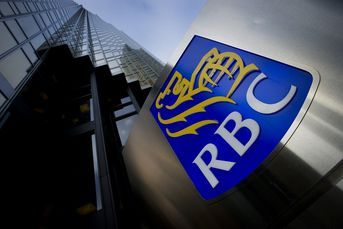Wirehouse recruiting loans measure in the billions
Financial advisers conditioned to expect average loans of six figures as competition keeps firms ponying up for top talent.
It’s no secret that veteran wirehouse advisers can command top dollar when moving between firms but disclosures from Morgan Stanley and UBS AG show just how much advisers are able to bring in.
Morgan Stanley Wealth Management, the largest advisory firm by head count, reported it is holding more than $5.2 billion in outstanding loans to its 16,300 financial advisers. That equates to nearly $321,402 per Morgan Stanley adviser at the end of the second quarter.
UBS Wealth Management Americas, which has around 7,119 advisers, reported nearly $3 billion in recruitment loans to its advisers, meaning each one is into the company for an average of $419,300.
The loans are generally structured as an upfront payment to the adviser that amortizes over anywhere from seven to 12 years provided that the adviser remains at the firm and continues to meet performance goals. An upfront loan at a wirehouse can reach as high as 150% of an adviser’s trailing-12-month production, according to estimates from recruiters.
Many of those loans at Morgan Stanley are tied to the 2009 merger with Smith Barney, according to spokeswoman Christy Jockle.
UBS spokesman Gregg Rosenberg did not return a request for comment by press time.
“It really shows how competitive the industry is,” said Alan Johnson of the compensation firm Johnson Associates. He said that he has consulted with both firms in the past.
Assuming those loans have an average duration of eight years, the loans may constitute around a $150 million quarterly expense for the firms if the total amount amortizes at a rate of around 12.5% each year, Mr. Johnson said.
UBS reported that it spent $184 million in the second quarter on compensations commitments related to adviser recruiting.
In addition, Morgan Stanley said it expects that it won’t be able to recoup around $128 million of that $5.2 billion, which could be attributable to advisers who leave before their loan has vested and can prove they should not have to repay the full amount.
Advisers who receive those large loan packages may have to stay in their seats for six to eight years for firms to start turning a profit, Mr. Johnson said, explaining that his calculation involved steady market performance, an increase in assets and continued performance by the advisers.
“If I bring in over $500 million and am able to take that to $1 billion, that’s pretty good,” he said. “If you run the numbers and the adviser stays five, six or seven years and the markets stay reasonable attractive, it works out.”
A turn in the markets, however, can throw off the calculation or depress the assets that firms were expecting to bring over. Executives have been unable to reduce those bonuses, despite statements by executives, including Mr. Gorman, that recruiting is an unnecessary “tax on the industry”.
“For 20-plus years, people have sworn they’ll never do it again,” Mr. Johnson said. “But we’ve conditioned these financial advisers to expect these.”
Mr. Johnson said that firms receive additional benefits from bringing in a top-notch adviser, such as raising the overall caliber of the office and serving as a role model for other advisers.
The advisers also remain in control because news of those recruiting deals gets around by word of mouth, and advisers want to be able to make as least as much as their friend made when moving firms.
While recruiting deals remain high, the overall loan total has declined over time at both firms. That’s likely due to a mix of old loans being paid off and attrition, said industry recruiter Danny Sarch of Leitner Sarch Consultants Ltd.
The outstanding loan balance at Morgan Stanley peaked in 2012, according to a review of quarterly filings. In the second quarter of 2012, the firm reported a balance of $6.2 billion. That number dropped to $5.7 billion a year later.
At the same time, Morgan Stanley reported a significant decline in head count, to 16,321 from 16,934. Many advisers left over the year as the firm integrated a new technology platform, although Ms. Jockle said the drop was also due to people paying off their notes, and that most of the attrition was due to advisers who would not have qualified for bonuses.
The continued decline is mostly coming as older notes are paid off and not replaced at an equal rate, Ms. Jockle said.
It is hard to tell if there will be an equilibrium where the number of new bonuses being offered matches the expiration of older deals. Morgan Stanley began disclosing the numbers in 2010 following the merger. UBS only began disclosing the loan balances as a separate line item this year.
Learn more about reprints and licensing for this article.






